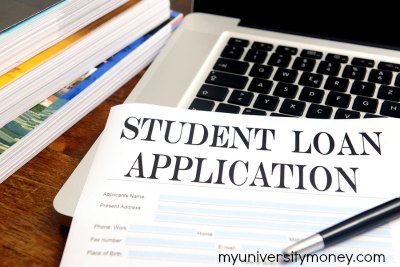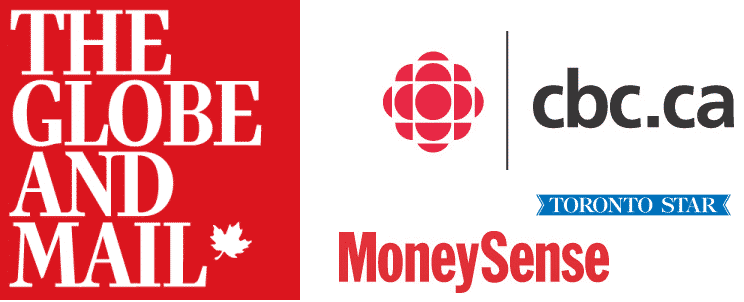If you’ve attended post-secondary schooling you’ve inevitably bumped into someone who had no idea that they had to pay back student loans once their schooling was finished. I’m actually continually shocked at how many people look at me kind of awkwardly when I say something like, “Yup, I had several friends that I made in university that really had no idea how student loans worked and weren’t sure if they had to pay them back or not. These were smart people that are now graduated and working for major corporations in fields like business, geology, agri-business, and sandwich artistry.” (I attended BA classes what can I say.) Over time, I’ve learned that these looks tend to mean that the person I’m talking to either fit my description at one point, or still do!
Well here’s the thing crew, other than some automatic grants that you probably have a statement somewhere detailing, you do in fact have to pay back the money the government LENT to you. See the government didn’t give you that money through a grant, subsidy, or scholarship, they merely paid the interest for you on your loan while you finished your studies. Now it’s time to pay the big dog back.
Four Main Considerations
When you finish your studies, you will have to make a few decisions about how you will repay that chunk of money you borrowed. Basically, after you leave post-secondary education, you have to decide the following questions:1. When will you start paying your loans back?
2. What method will you use to make your loan payment every month?
3. What type of interest rate will you choose to apply to your loans?
4. Over what length of time will you repay your loans, and how much will you pay every month?
Depending on which province you live in, different rules apply. When you’ve finished school, almost all student loans include some sort of grace period to let you get on your feet and find work. For the Canada student loans, this grace period means that you don’t have to make any payments for six months, but interest on the money you borrowed will begin to accumulate immediately. The provincial rules vary a little, but the same principle applies. You don’t have to take advantage of the grace period; it’s just an option.
Welcome to that Real World Your Teachers Kept Talking About
There are a variety of ways in which you can choose to repay your student loan after you leave school, but it is key to note: You are responsible for setting up a program to repay the money that you borrowed. Usually the student-loan administrators will give you notice either by phone or email, but it’s still up to you to follow their directions and set up your payment plan. If you fail to do this, payments will begin to be taken automatically out of the account
As far as your Canada student loans are concerned, there is only one choice you have to make:
Option 1: The amount you borrowed will be subject to a variable interest rate of prime plus 2.5%
Option 2: The amount you borrowed will be subject to a fixed interest rate of prime plus 5%.
Your provincial student loans probably have similar options, but the details depend on where you borrowed the money. Some provinces have even begun allowing students to repay the provincial part of their loans at a flat prime rate. Check out our article on interest rates and student loans for some sort-of-geeky financial stuff that will save you a lot of money.
Related:
- How You Need To Navigate The Student Loans System
- Student Loans – Jackpot! (Kind Of) Part 1 of 3
- Applying For Student Loans Part 2 of 3
- Repaying Student Loans Part 3 of 3
- Using a Student Loan To Invest – Smart or Unethical?
- How Much Difference Do Interest Rates Make On Student Loans?
The final decision you have to make about your student loans is how you organize your payment schedule. The default option, which most students choose, is paying back the loan over ten years, including the grace period. If you want to be out of debt faster, you can choose a shorter period, and the total amount you’ll pay in interest will be lower, but then obviously you will have to pay more per month. An important consideration is that you can choose to raise your monthly payment at any point—and you can make a lump-sum payment whenever you want as well. Given that fact, we suggest setting up a basic ten-year plan and then just making larger payments if you decide you want to at any point. There is no penalty for that. It’s also interesting to ask your bank to show you the different numbers for paying off the loan bi-weekly and for paying it off monthly. If you repay the loan bi-weekly, you will whittle down the principal faster and pay less interest. Also, remember that, if your loan was from certain provinces, you will be paying off the provincial student loan and the Canada student loan separately, so you’ll have to make two sets of arrangements.
Repayment Assistance Plan
In case you’re having trouble repaying your student loans and feel as if you’re about to drown, there are some life-preserving options available to you. Starting in 2009, the federal government started a program called the Repayment Assistance Plan (RAP). (In case you didn’t notice, a government program known by the acronym RAP is their way of trying to stay “hip” and connect with the youth of today.) If you apply for this program, you may be eligible for help, in the form of interest relief and debt reduction, depending on your income level and employment status. Similar help exists if you have a permanent disability. At any point, borrowers of student loans can look at revising the terms of their loans and there may be some help available from either the federal or provincial government. We recommend applying for help before you’re in a financial crisis, so that there will be time to stave off Armageddon for your credit rating and bank account.
One Silver Lining
Having to pay back money that you’ve borrowed sucks. Having to pay interest on money you’ve borrowed sucks even more (who wants to see money fly out of their wallet and not get anything in return – well other than politicians that is). The one nice thing that the government takes into consideration is that they give you a tax break on the interest you pay on your student loans. This comes in handy after you get your degree and enter the workforce.
Getting a plan in place to pay your student loans beats sticking your head in the sand and then getting a rude surprise one day when the Canada Student Loans Centre decides to take the first payment out of your account automatically. I know a couple people that allowed this to happen and it cause a lot unneeded stress in their life! Do yourself a favour and meet this unpleasant reality head on!



